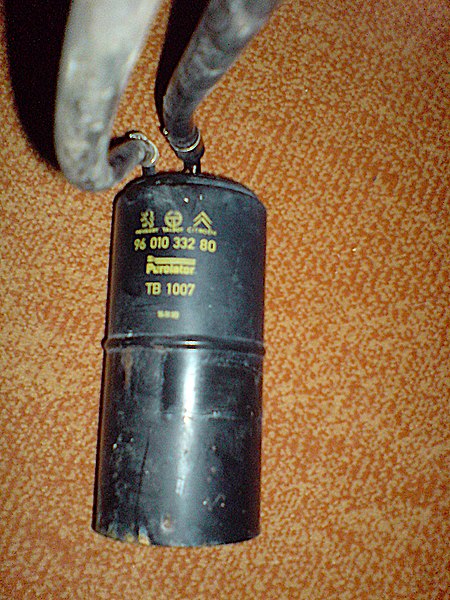On-board diagnostics (OBD) is a term referring to a vehicle's self-diagnostic and reporting capability. In the United States, this self-diagnostic is a requirement to comply with Federal Emissions standards to detect failures that may increase the vehicle tailpipe emissions to more than 150% of the standard to which it was originally certified.
Various angles and details of a "MaxScan OE509" – a fairly typical onboard diagnostics (OBD) handheld scanner from the first decade of the 21st century. Used to connect to the SAE J1962 Data Link Connector (DLC) found in many cars of the era.
Female OBD-II connector on a car
Typical simple USB KKL Diagnostic Interface without protocol logic for signal level adjustment.
Vehicle emissions control
Vehicle emissions control is the study of reducing the emissions produced by motor vehicles, especially internal combustion engines. The primary emissions studied include hydrocarbons, volatile organic compounds, carbon monoxide, carbon dioxide, nitrogen oxides, particulate matter, and sulfur oxides. Starting in the 1950s and 1960s, various regulatory agencies were formed with a primary focus on studying the vehicle emissions and their effects on human health and the environment. As the worlds understanding of vehicle emissions improved, so did the devices used to mitigate their impacts. The regulatory requirements of the Clean Air Act, which was amended many times, greatly restricted acceptable vehicle emissions. With the restrictions, vehicles started being designed more efficiently by utilizing various emission control systems and devices which became more common in vehicles overtime.
Fuel vapor storage canister for a Peugeot 205




